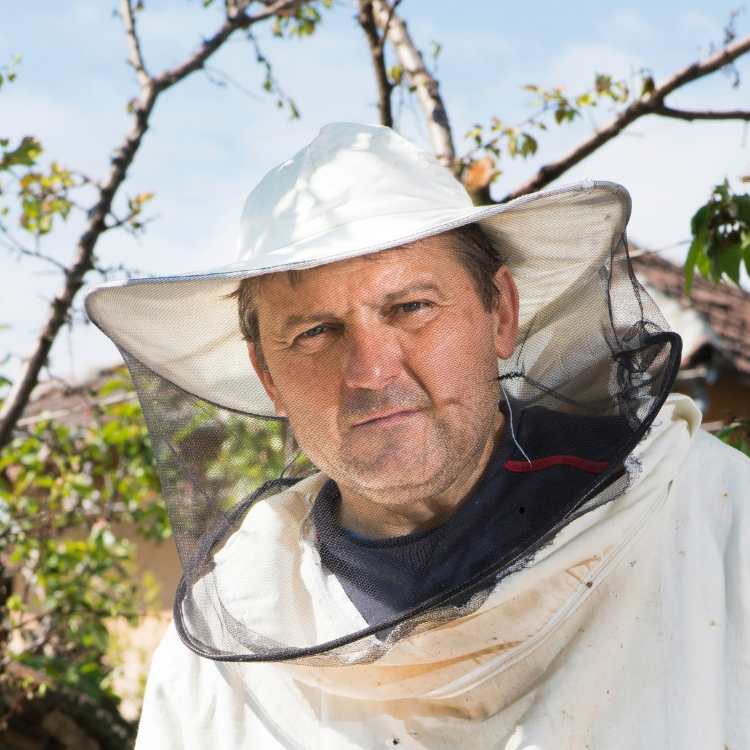So, can bees fly at night? We have been bombarded with this question, especially when someone spots a late running worker hovering near the hive entrance at dusk. There is the short answer and there is the long answer. The short? Not usually. The long one? Like with most things in the bee world, there is a lot more going on under the surface.
Diurnal by design
Honeybees and bumblebees: Strict day workers
The vast majority of the bees that we see around us, including the ones we know best, like Apis mellifera and bumblebees, are diurnal. This means biologically, these insects are designed to operate under daylight. Ask “Can bees fly at night?” about these species, and the answer is no.
Why bees need light to fly?
Honeybees rely on two sets of eyes for two different purposes.
- Compound eyes (thousands of lenses for motion and UV detection)
- Ocelli (simple eyes that detect changes in light)
Together, these systems are powerful navigational tools, granted there is light. Once darkness falls, their ability to orient and fly drops off completely.
When the lights go out
The viral drop test
There is a very popular video on the internet that shows what happens when bees are suddenly plunged into darkness mid-flight. No gliding. No controlled descent. They drop like rocks. That is how dependent these insects are on visual cues. So, when someone asks “can bees fly at night?” I simply point to that clip on YouTube for a pretty dramatic answer.
Flight shutdown
This is not clumsiness. It is a built in safety feature. In the wild, flying in the dark would get them lost or eaten. By halting flight in low light, bees protect themselves from disaster.

Exceptions to the diurnal rule
The 1% that defy the daylight rule
Some species break the convention. You can also spot night-flying bees like the Megalopta genalis or Lassioglossum texana flying in dim light. These bees are either crepuscular (active at dusk/dawn) or nocturnal (active at night).
How do these bee species see in the dark
Unlike honeybees or bumblebees, these species are equipped with:
- Larger compound eyes.
- Enlarged ocelli
- Neural adaptations that enhance low light sensitivity.
In some cases, their eyes are over 20 times more sensitive than those of diurnal bees. These adaptations allow them to answer “can bees fly at night?” with a confident yes.

Megalopta genalis
Why do most bees stick to daylight
Using the sun for navigation
Honeybees use polarized sunlight as a compass. Their internal clock syncs with the sun’s movement, letting them forage miles from the hive and still return accurately. Without the sunlight to guide them, their entire navigation system breaks down.
Dangers of flying after dark
When a forager is not able to return home before nightfall, she will cling to a plant and wait. It the weather is warm, she might survive the night. But rain, cold, predators or disorientation can kill her. For honeybees, the answer to “can bees fly at night?” is really tied to its survival. These bees are just not built for the night.
Inside the hive after dark
Even though external flight and foraging stop, the hive remains active:
- Nurse bees tend to brood
- Cleaners remove debris from the hive
- Builders continue their wax production
- And guards protect the entrance
Forager bees rest to conserve energy. The whole colony operates in shifts, keeping the hive running smoothly throughout the night.

Beehive at night
The importance of nocturnal bees
The pollinators of the night
Some flowers only bloom after sunset and thus they have to rely on these crepuscular or nocturnal bees for pollination. Bees like the Xylocopa tranquebarica (the Indian carpenter bee) have evolved specifically to fulfill this role. We have seen this ability in full flight. These species are able to fly in complete darkness and is a very rare trait among roughly 20,000 known bee species.
How common are night flyers?
Only about 250 species of bees can fly at night. That is barely 1%. So while you can say “some bees can fly at night,” you should also understand just how rare this ability really is.
The myth of light attracted bees
People sometimes tend to think that bees are flying at night because they see them buzzing around porch lights. But this is not true nocturnal behavior. Artificial light confuses bees. They are not navigating. They are lost. True night flyers can orient themselves and locate flowers even under moonlight or in pitch black jungle canopies.

The final answer
For honeybees, bumblebee and most other common species, the answer is no. They cannot. Their biology, vision, and behavior all depend on daylight. They stop flying once the sun goes down. But a handful of highly adapted species can fly at night, thanks to specialized vision and neurological traits.
So, the next time someone asks, “can bees fly at night?” you have just the right answer for them.
- Most can’t
- A few do.
- All are crucial to our ecosystem. Day or night.
For more insightful stories and intriguing tales from the fascinating world of bees, consider following our full blog here.





